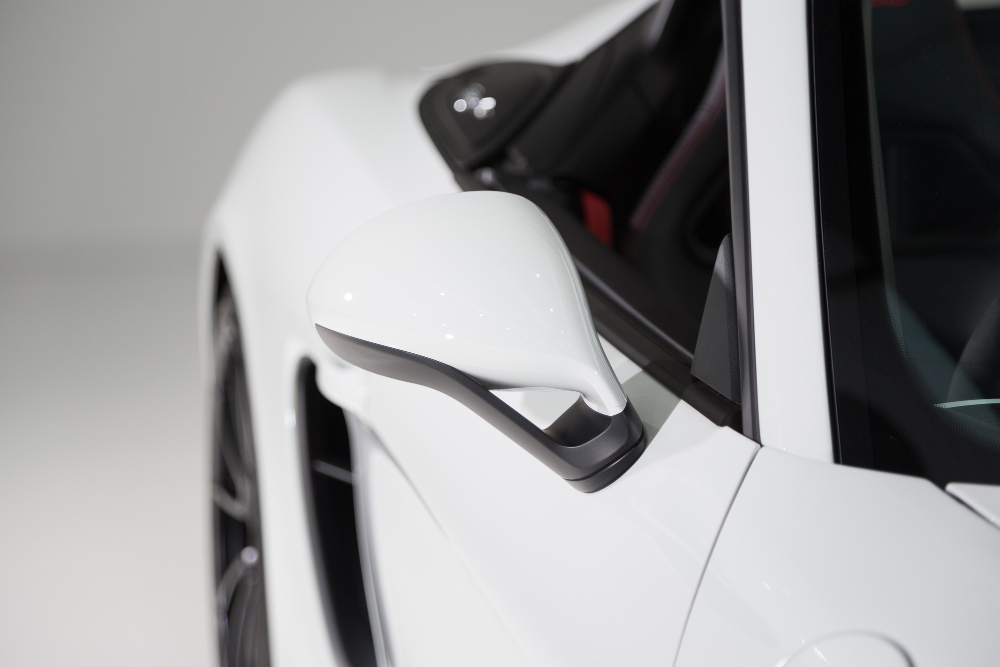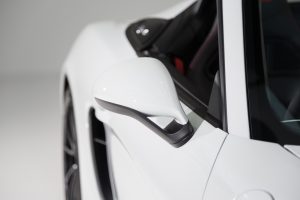Why restore a salvage car?
Restoring a salvage car can be a rewarding and fulfilling experience. There are several reasons why someone might choose to restore a salvage car. One of the main reasons is the opportunity to showcase their forte in car restoration. Restoring a salvage car allows individuals to demonstrate their expertise and skills in bringing a vehicle back to life. It is a chance to showcase their knowledge of automotive mechanics, bodywork, and aesthetics. Additionally, restoring a salvage car provides a unique opportunity for creative expression and customization. Owners can personalize their vehicle and make it a reflection of their own style and preferences. Finally, restoring a salvage car can be a cost-effective option for those who are looking to own a high-quality vehicle without breaking the bank. By purchasing a salvage car and investing time and effort into its restoration, individuals can obtain a vehicle that meets their needs and desires at a fraction of the cost of buying a new car.
Benefits of restoring salvage cars
Restoring salvage cars can provide numerous benefits to car enthusiasts and savvy buyers alike. One of the main advantages is the potential cost savings. Salvage cars are often sold at significantly lower prices compared to their non-damaged counterparts, allowing buyers to acquire high-quality vehicles at a fraction of the cost. Additionally, restoring a salvage car can be a rewarding and fulfilling experience for those who enjoy working on cars. It allows individuals to showcase their skills and creativity by bringing a damaged vehicle back to its former glory. Moreover, restoring salvage cars can also be an environmentally-friendly choice. By giving a salvage car a second chance, it reduces the need for manufacturing new vehicles and helps in recycling automotive parts. Overall, restoring salvage cars, such as the NPR HD, offers financial savings, a sense of accomplishment, and contributes to sustainability.
Finding the Right Salvage Car

Researching salvage car auctions
When it comes to researching salvage car auctions, it is important to gather as much information as possible. Start by identifying reputable auction houses that specialize in salvage cars. Look for online platforms that provide detailed listings and photos of the vehicles up for auction. Take note of the auction dates and locations, as well as any registration requirements. Additionally, read reviews and testimonials from previous buyers to get an idea of the auction house’s reputation. Researching salvage car auctions thoroughly will help you make informed decisions and find the best deals on your restoration project.
Evaluating salvage car condition
Evaluating the condition of a salvage car is a captivating process that requires careful examination and assessment. When considering purchasing a salvage car, it is essential to thoroughly inspect its overall condition, including the exterior, interior, and mechanical components. One should pay attention to any visible signs of damage, such as dents, scratches, or rust, as well as the functionality of essential features like the engine, transmission, and suspension. Additionally, evaluating the salvage car’s history, including previous accidents or repairs, can provide valuable insights into its overall condition. By conducting a comprehensive evaluation, potential buyers can make informed decisions and ensure they are investing in a salvage car that meets their needs and expectations.
Determining salvage car value
Determining the value of a salvage car can be a complex process. Several factors come into play, such as the extent of the damage, the make and model of the vehicle, and the availability of replacement parts. Additionally, the location and demand for salvage cars in the market can also influence their value. One common method used to determine the value of a salvage car is through a thorough inspection by a certified appraiser. They assess the condition of the vehicle, evaluate the repairs needed, and consider the potential resale value. It is important to keep in mind that the value of a salvage car is typically lower than that of a similar non-salvage vehicle due to its history and potential issues. Therefore, it is crucial to carefully consider all these factors when determining the value of a salvage car.
Preparing for Restoration

Creating a restoration plan
Creating a restoration plan is a crucial step in the process of restoring salvage cars. It involves carefully assessing the condition of the vehicle and determining the necessary repairs and improvements. This includes evaluating the extent of the damage, identifying the required replacement parts, and estimating the overall cost and timeline for the restoration project. By creating a detailed restoration plan, car enthusiasts can ensure that the restoration process is organized and efficient, leading to a successful outcome. Additionally, a well-thought-out plan helps in prioritizing tasks and allocating resources effectively. Whether it’s repairing the bodywork, fixing mechanical issues, or enhancing the interior, a comprehensive restoration plan sets the foundation for a successful salvage car restoration journey.
Gathering necessary tools and equipment
When it comes to gathering necessary tools and equipment for restoring salvage cars, one essential item to have is a reliable set of tools. From wrenches and screwdrivers to power tools and diagnostic equipment, having the right tools can make the restoration process much smoother. Additionally, it is important to have safety equipment such as gloves, goggles, and protective clothing to ensure personal safety while working on the car. Another important aspect of gathering tools is to consider the specific needs of the project. For example, if you are restoring a classic car like a Wildwood, you may need specialized tools and equipment to handle the unique features and components of the vehicle. Overall, gathering the necessary tools and equipment is a crucial step in the restoration process and can greatly impact the success of the project.
Setting up a workspace
Setting up a workspace is an essential step in the process of restoring salvage cars. A well-organized and equipped workspace provides a conducive environment for carrying out the necessary repairs and modifications. It is important to have a spacious area with proper lighting and ventilation to ensure safety and efficiency. Additionally, having the right tools and equipment readily available will save time and effort during the restoration process. Whether it’s a garage, a dedicated workshop, or an outdoor space, setting up a workspace that meets your needs will greatly contribute to the success of your salvage car restoration project.
Disassembling the Salvage Car
Removing damaged parts
When it comes to removing damaged parts from salvage cars, a nonconformist approach is often necessary. Salvage cars can have a variety of issues, from bent frames to broken engines. However, with the right knowledge and tools, these damaged parts can be successfully removed and replaced. By taking a nonconformist approach, car enthusiasts can think outside the box and find innovative solutions to tackle the challenges of restoring salvage cars. Whether it’s using unconventional methods or repurposing parts, the nonconformist mindset allows for creative problem-solving and ultimately leads to a successful restoration process.
Documenting the disassembly process
During the disassembly process of a salvage car, it is crucial to document each step to ensure a smooth restoration. This documentation serves as a reference for future reassembly and helps in identifying any missing or damaged parts. One important aspect of documenting the disassembly process is to take detailed photographs of the mini components and their placement. These photographs provide a visual guide for reassembling the car and help in identifying any missing or misplaced mini parts. By meticulously documenting the disassembly process, car enthusiasts can ensure a successful restoration project.
Organizing and labeling salvaged parts
Organizing and labeling salvaged parts is a crucial step in the process of restoring salvage cars. It ensures that each component is easily identifiable and accessible when needed. When tackling a project like this, it is important to have a systematic approach. One effective method is to create a detailed inventory of all salvaged parts, including their condition and location. This can be done using a spreadsheet or a specialized software. Additionally, labeling each part with clear and concise descriptions can greatly facilitate the assembly process. By using keywords such as town, 26, country, touring, and l, it becomes easier to categorize and locate specific parts. This level of organization not only saves time but also minimizes the chances of misplacing or overlooking important components.
Repairing and Replacing Parts
Repairing salvageable parts
Repairing salvageable parts is a crucial step in the process of restoring salvage cars. Whether it’s a damaged engine, a broken transmission, or a worn-out suspension, salvaging and repairing these parts can significantly improve the overall condition of the vehicle. This step involves careful inspection, identification of the damaged components, and sourcing the necessary replacement parts. Skilled mechanics and automotive enthusiasts can utilize their expertise to restore these salvageable parts, ensuring that they are in optimal working condition. By repairing salvageable parts, car enthusiasts can breathe new life into a salvaged vehicle and transform it into a road-worthy machine.
Finding and purchasing replacement parts
Finding and purchasing replacement parts for salvage cars can be a challenging task. However, with the right resources and knowledge, it is possible to find high-quality parts that will help restore the car to its former glory. One important aspect to consider is the availability of native american parts, which can add a unique touch to the restoration process. Native american parts offer a rich history and cultural significance, making them highly sought after by car enthusiasts and collectors. By incorporating native american parts into the restoration, car owners can create a one-of-a-kind vehicle that showcases both its original design and the influence of native american craftsmanship.
Ensuring compatibility of replacement parts
When restoring salvage cars, one of the key considerations is ensuring the compatibility of replacement parts. This is especially important when working with a specific make and model, such as a Chevy. It is crucial to find replacement parts that are specifically designed for Chevy vehicles to ensure proper fit and functionality. By using genuine Chevy parts, you can be confident that the restored car will meet the original manufacturer’s standards and provide a reliable and safe driving experience. Whether it’s the engine, transmission, or body parts, choosing the right Chevy-compatible replacement parts is essential for a successful restoration project.
Restoring the Salvage Car
Performing bodywork and paint
Performing bodywork and paint is a crucial step in the process of restoring salvage cars. This step involves repairing any damage to the car’s body and giving it a fresh coat of paint. One important aspect of bodywork is ensuring that the car’s frame is structurally sound. This may involve straightening bent or damaged frame components and reinforcing weak areas. Additionally, any dents or scratches on the car’s exterior should be carefully repaired and sanded down to create a smooth surface. Once the bodywork is complete, the car can be primed and painted. Choosing the right paint color and finish is essential to achieve a professional-looking result. It is important to follow proper painting techniques and use high-quality materials to ensure a long-lasting and visually appealing finish. Overall, performing bodywork and paint transforms a salvage car’s appearance and brings it one step closer to being roadworthy.
Repairing electrical and mechanical systems
Repairing electrical and mechanical systems in salvage cars requires a meticulous approach to ensure safety and optimal performance. When it comes to volvo automobiles, it is essential to address any issues with the electrical wiring and components, as well as the mechanical systems such as the engine, transmission, and suspension. By conducting a thorough inspection and using high-quality replacement parts, the process of restoring a salvaged volvo car can be successful. Whether it’s diagnosing and fixing electrical faults or repairing and fine-tuning the mechanical components, attention to detail is key in bringing these vehicles back to their former glory.
Reassembling the salvaged car
After gathering all the necessary parts and components, the next step in restoring a salvaged car is reassembling it. This process involves carefully putting all the pieces back together to create a fully functional vehicle. One important aspect to consider during reassembly is the landscape. Ensuring that the car is aligned properly and the components fit seamlessly is crucial for its overall performance and safety. With attention to detail and precision, the salvaged car can be transformed into a road-worthy vehicle once again.
















